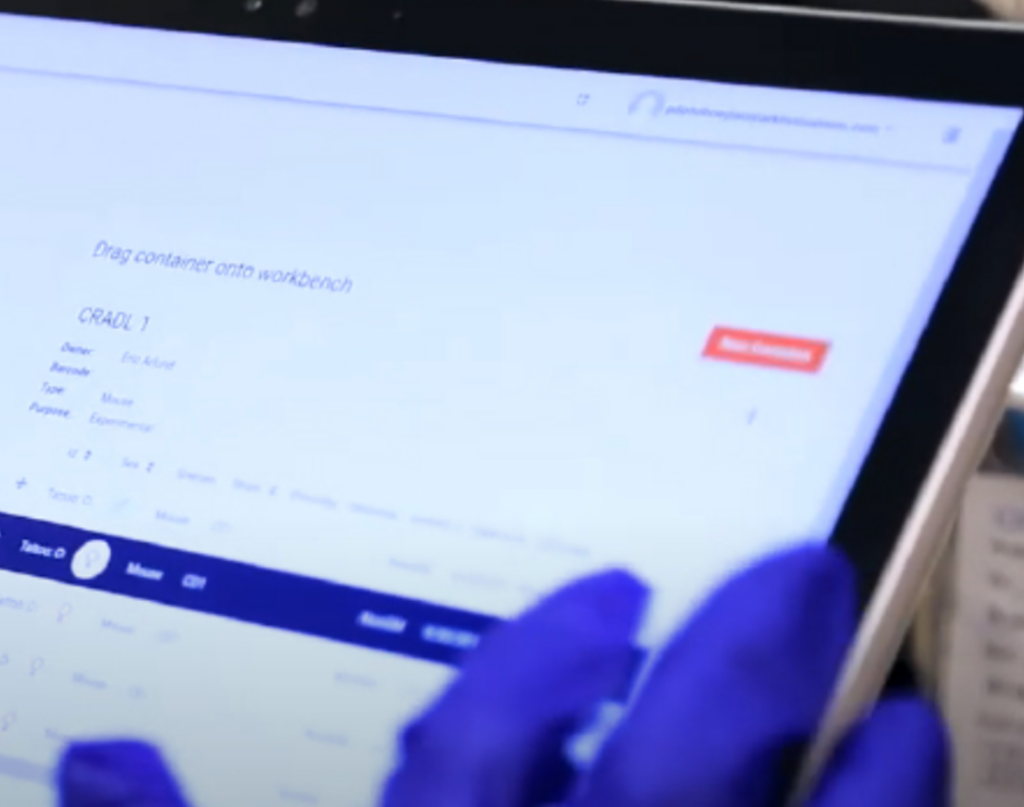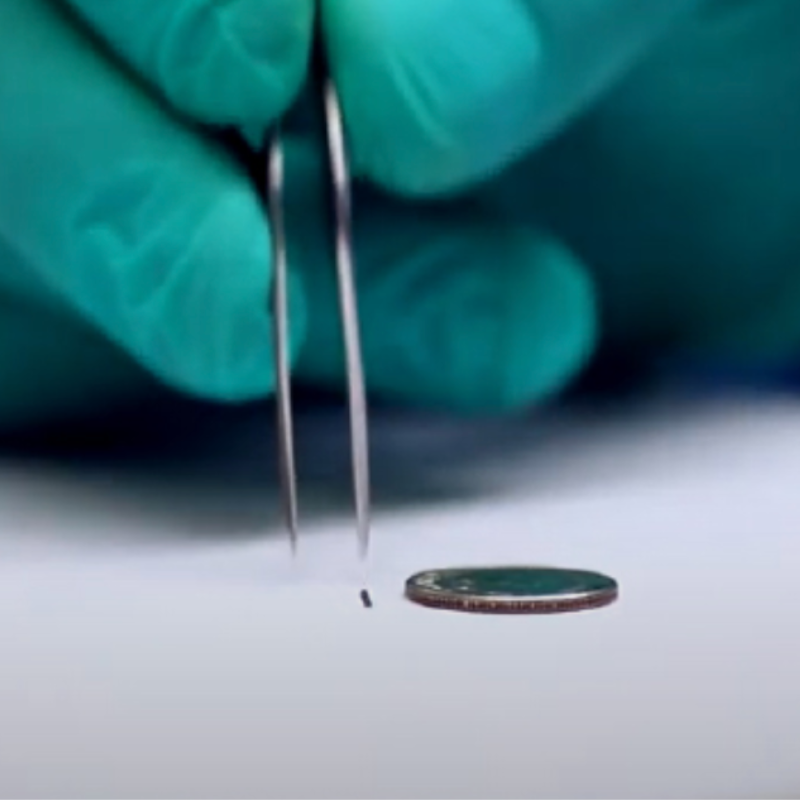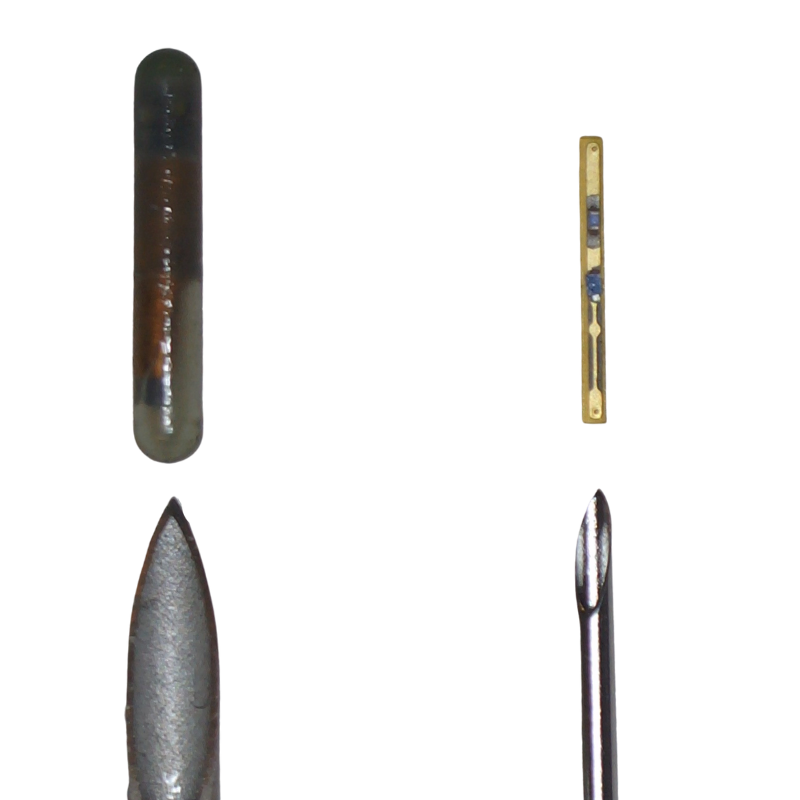
In the News
Decoding tag applications: glass transponder RFID tags vs Digitail
RFID, also known as radio frequency identification, can facilitate mouse management and identification in preclinical research environments. The benefits it brings compared to other methods, is undisputed. The technology offers a number of specific advantages to research sectors, but how do you ensure you’ve chosen the right RFID method to implement?
Preclinical researchers will often use RFID tagging to meet animal welfare regulations in Europe as well as to streamline their own data capture processes. There are however several factors related to the application of RFID tags that can make some products stand out from the crowd.
Whether you’re already using RFID tags or are interested in implementing this as a new ID method, there are several things to consider when it comes to mouse-by-mouse applications that can accelerate or decelerate the benefits and reasonings of choosing RFID.
In this blog we’ll explore the typical process of applying our RFID tag system, Digitail versus other RFID products available in the market. This will provide researchers like you with the insight required to have a complete understanding of where application resources, technician time and animal handling can be reduced.
The benefits of RFID tags in mouse identification:
In a laboratory environment, RFID technology offers specific advantages which often result in preclinical researchers concluding that RFID tags are the most preferable method of mouse management. These can include:
Non-intrusive identification:
RFID tags allow for non-contact and non-intrusive identification of mice. Without physically handling mice, researchers can identify and monitor behaviour, which is particularly useful in scenarios where minimising stress on animals is essential.
Automated tracking:
RFID tagging systems enable better data tracking and reduced identification errors in laboratories. Mice can be tracked and data collection can be automated to a certain degree to ensure that the detection and recording of mice is more efficient.

Real-time data access:
RFID tags can store and transmit more data when compared to many other ID methods. This in itself allows for real-time access to information regarding each mouse’s condition and behaviour. The researcher’s access to critical information is therefore enabled without the requirement for direct contact with the mouse.
High throughput:
Human errors are often diminished dramatically when using RFID systems, which means that for large populations of mice, it is easier to manage and collect error-free data from multiple animals simultaneously. Boosting the capabilities of multiple reading collections that are accurate and consistent is also crucial for research outcomes.
LIMS integration:
Perhaps one of the most prominent benefits of RFID tagging is its capability to be integrated with existing laboratory management systems. RFID tags allow for seamless data exchanges and synchronization which enhances the overall efficiency of data management and experimental workflows.

Understanding the different RFID tags in the market
Depending on the benefit of most appeal to your facility. the most common next step involved with adopting RFID tagging as a method of mouse identification is to navigate the products available in the market.
An obvious consideration is that of an ethical basis. Researchers should ensure that the RFID tag they have chosen aligns with their ethical guidelines which are often reinforced by regulatory bodies, company ethos and the Three Rs.
The more practical considerations that researchers then face whilst navigating the market include:

- Tag type
- Frequency
- Read range
- Data storage capacity
- Integration outlets
As well as the above, there are also two highly crucial factors of an RFID product which play a much larger role in the day-to-day identification requirements, these are applications of the RFID and the tag size and form.
Size really does matter
The size of the RFID tag is of extremely high importance as this is what directly relates to the application required and the ethical guidelines for using the product.
Tags in the 21st century should always be minimally invasive and designed with the stress they cause on the animal in mind. It comes as no shock to researchers that the smaller the tag the simpler the application process and the less invasive the procedure of implementation is.
A typical RFID tag on the market can be 1.4mm in diameter to 8.5mm in length.
Many RFID tags take the form of a glass transponder in a cylinder shape. RFID glass tags can be implanted into lab animals and are commonly made up of an electric circuitry and a solenoid antenna enclosed in a glass capsule.
The capsule aspect of their design results in them being both wider and thicker than necessary. Although designed for use in animals, this was primarily for domesticated pets rather than laboratory rodents. As a result, even the shortest glass transponder still requires at least an 18 gauge needle to apply. Many providers in the market however will suggest a 15.5 gauge needle or bigger.
The size and implantation concerns that arise from these kinds of dimensions are only magnified when used in smaller animals like mice. Although RFID glass tags have evolved over the years to overcome biocompatibility concerns, read range limitations and fragility complications, their size can still be classed as excessively invasive which poses threats of infection, migration and displacement.
Application processes associated with RFID glass tags
We work closely with researchers across the world to streamline their mouse identification methods and internal ID laboratory processes. This means that we often speak with researchers to understand their previous methods of ID.
RFID glass tags can be applied in a manner of different ways which are often product specific. The application, however, can typically include a number of steps:
Step 1:
Anaesthetizing the lab animal
Step 2:
Preparing the animal ensuring it is shaved
Step 3:
Injecting the animal with a 14 gauge – 18 gauge needle
Step 4:
Closing the injection hole using wound glue

Typical RFID glass transponder needle VS
the size of the Digitail needle.
Although this may seem like a simple process, it is a lengthy one when multiplied by the number of mice used on a study or in a lab. Many customers of ours have also provided insight into the additional steps which can be taken during the application, this can be anything from clipping an animal’s back toenails to ensure scratches to the application area don’t affect the wound, to assessing an RFID glass tag’s sensitivity to extreme temperatures prior to implementation.
Digitail is transforming the application process of RFID tags
Digitail is smaller in all dimensions compared to every RFID tag in the market. We know this is a bold statement to make, but there’s a reason we designed the world’s smallest RFID tag! Not only is it shorter in length, narrower in width, and smaller in height, but it is specifically designed for the purpose of laboratory rodent use.
This means that the team behind the development of Digitail RFID tags have not only overcome read distance requirements, tag migration, ferrous content side effect risks and implementation location, but they are simple to apply by even the most novice of technicians.
Digitail is applied via the tail through a 21 gauge needle, implementing a 6mm long, 0.5 mm wide and only 0.25 mm high tag into the base of a laboratory animal’s tail. This removes step 1, step 2 and step 4 from the typical RFID glass tag application process.
Unlock the simplest RFID tag application and implement IACUC-approved Digitail into your research facility. Get in touch with us to find out more!



